Do you have a question about the Lincoln 2005 Town Car and is the answer not in the manual?
Alerts for vehicle conditions and potential expensive repairs.
Alerts for low brake fluid or potential system issues.
Indicates a malfunction in the ABS system.
Alerts to issues with the supplemental restraint system.
Alerts when oil pressure falls below the normal range.
Illuminates when engine coolant temperature is high.
Indicates fuel level in the fuel tank.
Overview of the navigation system features.
Information on using voice commands for the navigation system.
Options to select a detour or change route preferences.
Changes Quick POI menu settings and displays POIs on map.
How to enter a destination for navigation.
Options for setting a destination: Address, POI, Previous Destination, Emergency.
How to select destinations by name or category.
How to avoid a certain area while navigating.
How the navigation system calculates routes.
Overview of the dual zone climate control system.
Controls for turning headlamps and parking lamps on/off.
Information on the HomeLink system for garage doors, etc.
Steps to program HomeLink buttons.
How to operate power windows, including one-touch down.
Information on maintaining speed with cruise control.
Steps to set and activate the speed control system.
Safety guidelines for using mobile communication equipment.
How the message center displays vehicle information.
Display average fuel economy in miles/gallon or liters/100 km.
Procedure to accurately monitor highway fuel economy.
Estimates how far you can drive with remaining fuel.
How to lock and unlock all doors.
How to unlock driver's door or all doors using remote.
How to lock doors using remote or power lock control.
How to activate and deactivate the panic alarm.
Procedure to reprogram remote entry transmitters.
Automatically locks all doors when specific conditions are met.
Procedure to enable/disable the autolock feature.
How to use the keyless entry keypad to lock/unlock doors and open trunk.
How to create a personal entry code for the keypad.
How to unlock driver's door, all doors, or lock doors using keypad.
Information on the engine immobilization system.
Procedure to program your own coded keys.
How the perimeter anti-theft system warns of unauthorized entry.
How the Personal Safety System adapts to occupant conditions.
Tailors airbag inflation level based on impact severity.
Detects impact severity to modify airbag deployment.
Tailors driver airbag deployment level based on seat position.
Turns off front passenger airbag for certain occupants or conditions.
Detects safety belt usage to tailor airbag deployment and pretensioner activation.
Tightens safety belts firmly during frontal collisions.
Allows gradual webbing payout to reduce belt force on chest.
Checks system status via warning light or tone.
General safety advice for occupants and children.
Seat belt system feature to reduce injury risk in collisions.
Normal retractor mode; locks belt on vehicle movement or impact.
Shoulder belt is automatically pre-locked for child safety seats.
Supplemental warning for safety belt usage.
Explains how the system adapts to crash severity and occupant conditions.
Explains how airbags activate based on longitudinal deceleration.
Explains how side airbags activate based on lateral deceleration.
Information on using safety restraints for children.
Legal requirements and precautions for child safety seats.
When children should use safety belts instead of child seats.
Guidelines for using belt-positioning booster seats.
Description of backless and high-back booster seats.
Explains why shoulder belts are crucial when using boosters.
Instructions for installing child safety seats.
Choosing and following instructions for safety seats.
Steps for reviewing information and installing a safety seat.
Steps for installing child seats using vehicle seat belts.
How to attach tether straps to anchor points.
How to attach child seats using LATCH anchors.
Guidelines for inspecting and inflating tires properly.
How to inspect tire treads and sidewalls for wear and damage.
How to check and inflate tires to recommended pressure.
Guidelines for using correct replacement tires and wheels.
Procedure for safely changing a flat tire.
Steps to safely change a tire, including parking brake and blocking.
How to inspect tire treads for uneven wear and damage.
What to do if you have a flat tire on the highway.
Importance of proper alignment for tire wear and vehicle handling.
Guidance on proper vehicle loading and weight ratings.
Maximum allowable weight of the fully loaded vehicle.
Maximum allowable weight of vehicle and loaded trailer.
Highest possible weight of a fully loaded trailer the vehicle can tow.
Procedure to calculate available cargo and luggage load capacity.
Guidelines for towing a trailer safely.
Important considerations when towing a trailer.
Guidelines for towing vehicle with all four wheels on the ground.
Positions of the ignition switch and SecuriLock information.
Safety advice for starting the vehicle and idling.
Information on brake noise and system checks.
How the ABS system works and its characteristics.
How to use ABS effectively during hard braking.
Information on the ABS warning lamp and potential issues.
How to set and release the parking brake.
How the traction control system helps maintain stability.
Preventing power steering system damage and fluid level maintenance.
How the air suspension system improves ride and handling.
Understanding gearshift positions and brake-shift interlock.
Feature preventing gearshift movement without brake pedal depressed.
Tips for rocking vehicle out and disabling Traction Control.
Warns driver of obstacles near rear bumper.
Guidelines for driving through deep or standing water.
Information on Ford's complimentary roadside assistance program.
Safety precautions and steps for jump starting a vehicle.
How to report safety defects to NHTSA and Ford.
Safety precautions for working on the vehicle.
How to check and add engine oil.
Steps to check engine oil level using the dipstick.
Steps to add engine oil, including type and quantity.
How to check and maintain engine coolant levels and concentration.
How to check coolant level and concentration.
Steps to add engine coolant, including mixture and level.
Important safety precautions for handling automotive fuels.
How the OBD-II system monitors emission controls and detects malfunctions.
| Brand | Lincoln |
|---|---|
| Model | 2005 Town Car |
| Category | Automobile |
| Language | English |
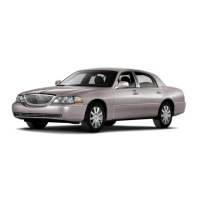
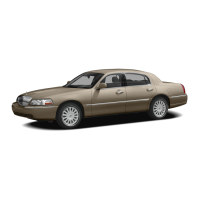
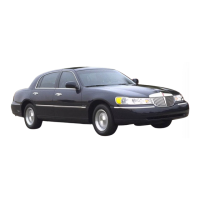

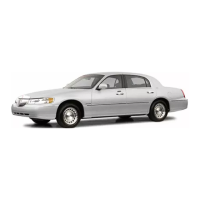
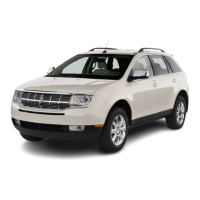
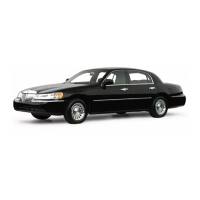

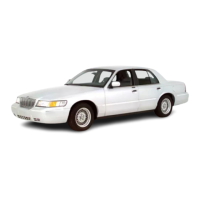
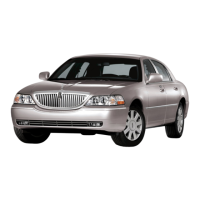
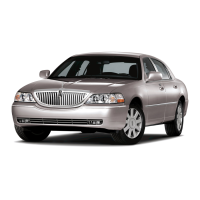
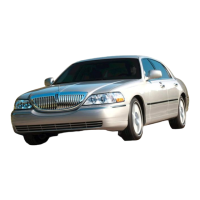
